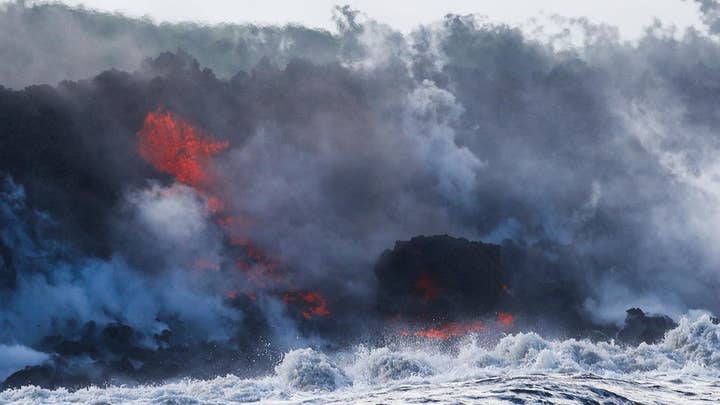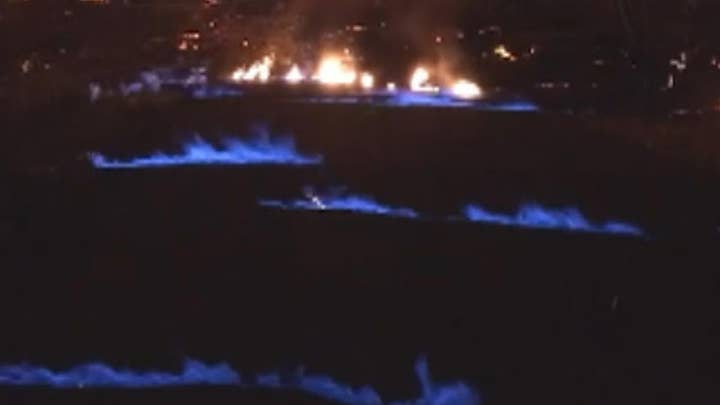Lava flow and ground cracking continued late Wednesday at Hawaii’s Kilauea Volcano Lower East Rift Zone, the U.S. Geological Survey (USGS) reported, as ash blanketed the Big Island.
Frequent ash emissions at the Kilauea summit earlier Wednesday resulted in plumes up to 8,000 feet high from what's reported to be one of the most active volcanoes on Earth, the Hawaii County Civil Defense Agency reported.
Major explosions have been occurring about twice a day, with minor ones blasting in between, the USGS reported.
One small explosion produced an ash cloud that reached about 7,000 feet above sea level, the geological survey reported, citing the National Service radar.
The cloud did not contain much ash and “cleared quickly,” the USGS said.
Resident Tiahti Fernandez told the Daily and Sunday Express that the ash has been "nonstop every day" since the summit has been erupting.
"Every day we have to wash our cars and wash down the patio because the ash just covers everything," Fernandez said. "The air quality has been so bad that everybody has been walking around with a [dust] mask."
New lava flow was expected to enter the Pacific Ocean east of Mackenzie State Park on Wednesday night, the Hawaiian Volcano Observatory reported. The state recreation area is about 45 miles east of the Kilauea Volcano.
Scientists said Tuesday that lava from the volcano was causing "fireworks-like explosions" as it entered the ocean.
NEWEST HAWAII VOLCANIC ASH PLUME RISES TO ABOUT 10,000 FEET
Wendy Stovall, a USGS scientist, said that lava breaks apart and sends fragments flying into the air when it hits the sea and cools.
Other flare-ups from the volcano were more formidable, as blue flames burned from cracks in the pavement on Wednesday.
"It's very dramatic. It's very eerie," Jim Kauahikaua, a USGS scientist, said.
He said it was just the second time he's ever seen blue flames during an eruption.
Stovall said the volcano is belching 15,000 tons of sulfur dioxide each day from ground vents that have formed since May 3.
Hawaii County has ordered about 2,000 people to evacuate from Leilani Estates and surrounding neighborhoods from the Big Island since the eruption began.
The eruption has destroyed 50 buildings, including about two dozen homes.
The Associated Press contributed to this report.




